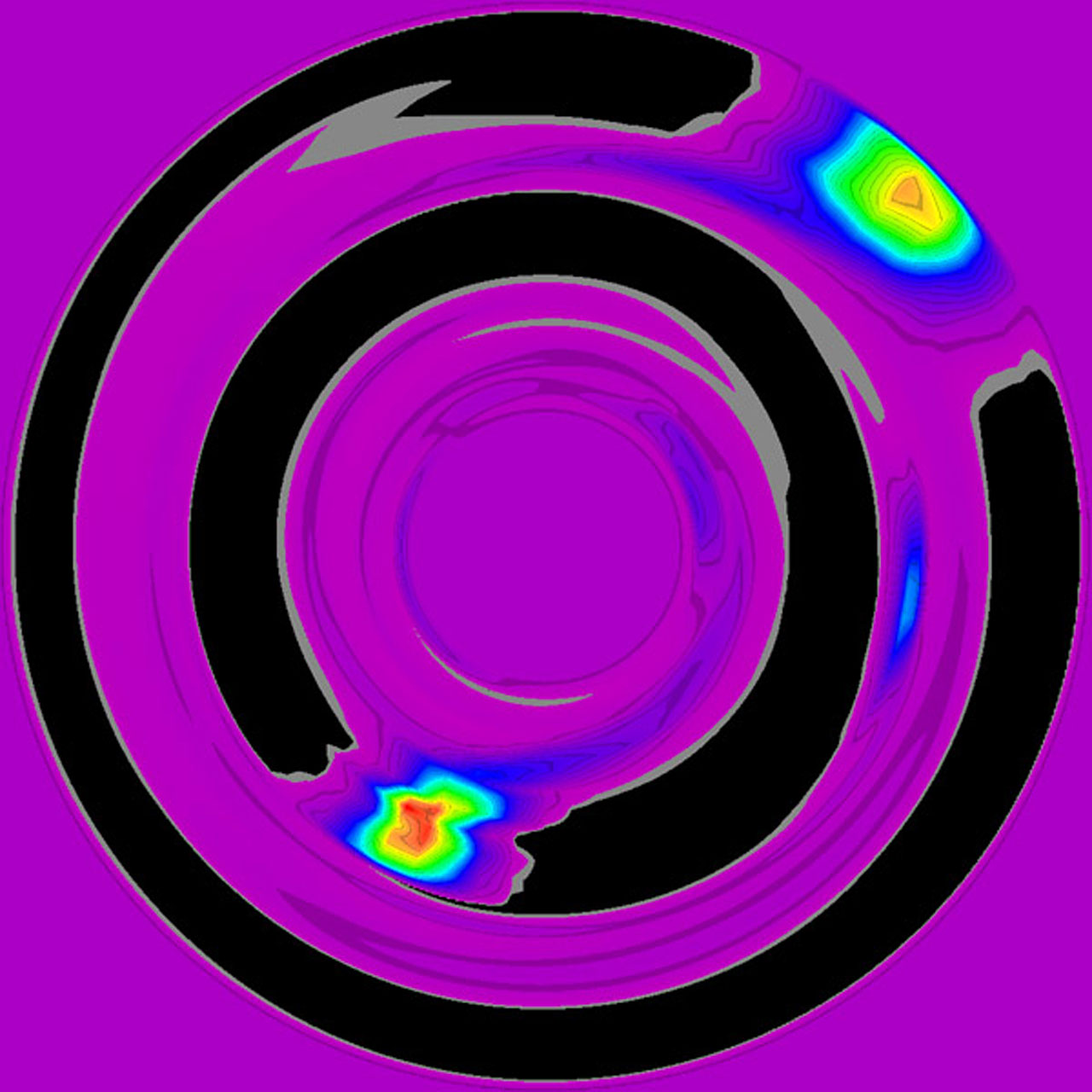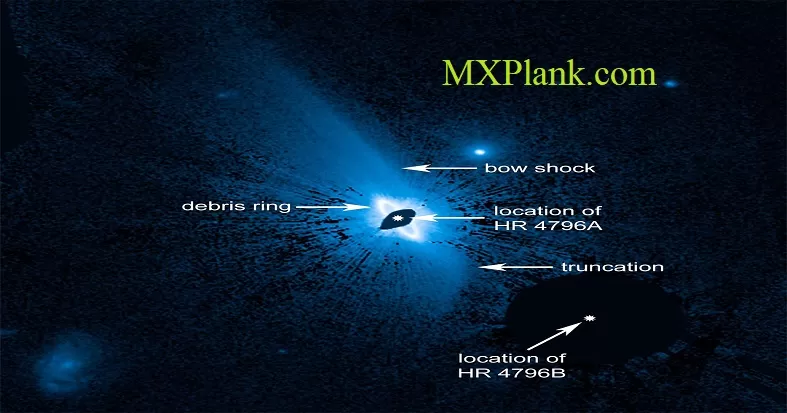Simulated image of planetary formation

False colour image of two gas giant protoplanets that have formedquickly in a disk of gas and dust. Each of the two protoplanets(yellow-red blobs) contains several Jupiter-masses of gas and dust.They orbit at distances of about 5 and 10 times the Earth's distancefrom the Sun in this theoretical model, at the orbital distances ofJupiter and Saturn in our own solar system. The protoplanetssweep up all the gas close to their orbits, leaving behind emptygaps (black) in the disk (purple). A solar-type star lies unseenat the center of the disk. These protoplanets formed in about 1000 years by the fastest known mechanism, the disk instabilitymechanism. If this star had a close binary star companion, theseprotoplanets might well be ejected outward from these otherwisestable orbits.
A protoplanet is a large planetary embryo that originated within a protoplanetary disc and has undergone internal melting to produce a differentiated interior. Protoplanets are thought to form out of kilometer-sized planetesimals that gravitationally perturb each other's orbits and collide, gradually coalescing into the dominant planets.In the case of the Solar System, it is thought that the collisions of planetesimals created a few hundred planetary embryos. Such embryos were similar to Ceres and Pluto with masses of about 1022 to 1023 kg and were a few thousand kilometers in diameter. Over the course of hundreds of millions of years, they collided with one another. The exact sequence whereby planetary embryos collided to assemble the planets is not known, but it is thought that initial collisions would have replaced the first "generation" of embryos with a second generation consisting of fewer but larger embryos. These in their turn would have collided to create a third generation of fewer but even larger embryos. Eventually, only a handful of embryos were left, which collided to complete the assembly of the planets proper.
Early protoplanets had more radioactive elements,the quantity of which has been reduced over time due to radioactive decay. Heating due to radioactivity, impact, and gravitational pressure melted parts of protoplanets as they grew toward being planets. In melted zones their heavier elements sank to the center, whereas lighter elements rose to the surface. Such a process is known as planetary differentiation. The composition of some meteorites show that differentiation took place in some asteroids.
According to the giant impact hypothesis the Moon formed from a colossal impact of a hypothetical protoplanet called Theia with Earth, early in the Solar System's history.
In the inner Solar System, the three protoplanets to survive more-or-less intact are the asteroids Ceres, Pallas, and Vesta. Psyche is likely the survivor of a violent hit-and-run with another object that stripped off the outer, rocky layers of a protoplanet. The asteroid Metis may also have a similar origin history to that of Psyche. The asteroid Lutetia also has characteristics that resemble a protoplanet.Kuiper-belt dwarf planets have also been referred to as protoplanets. Because iron meteorites have been found on Earth, it is deemed likely that there once were other metal-cored protoplanets in the asteroid belt that since have been disrupted and that are the source of these meteorites.
In February 2013 astronomers made the first direct observation of a protoplanet forming in a disk of gas and dust around a distant star.
NASA/ESA and The Hubble Heritage Team (STScI/AURA)






